Diamonds 101
Diamond Buying Guide - the 4C's
Color, Clarity, Cut and Carat Weight are collectively called the 4C's of diamond quality. Color measures a diamond’s absence of color. Clarity considers a diamond’s inclusions and blemishes and how they affect its appearance. Cut describes the diamonds fire, brilliance and proportions. Carat weight is the measurement of how much a diamond weighs in metric carats.
Diamond Color
The diamond color evaluation of most gem-quality diamonds is based on the absence of color. A chemically pure and structurally perfect diamond has no hue, like a drop of pure water, and consequently, a higher value. GIA’s D-to-Z diamond color-grading system measures the degree of colorlessness by comparing a stone under controlled lighting and precise viewing conditions to masterstones of established color value.
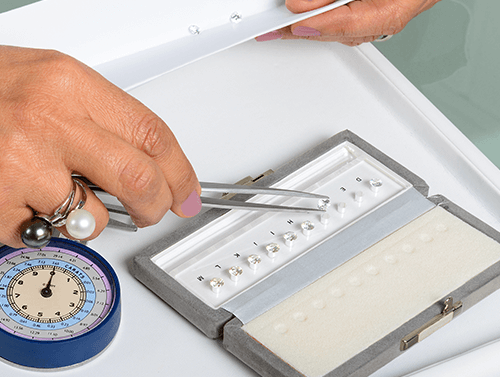
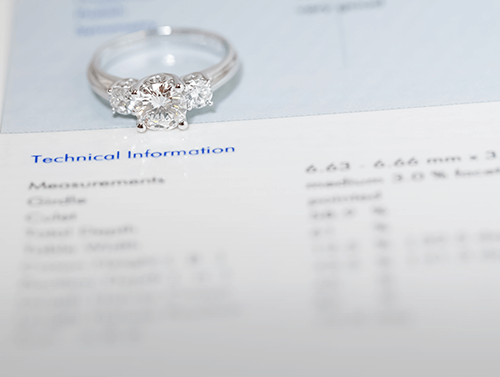
Many inclusions and blemishes are too tiny to be seen by anyone other than a trained diamond grader. To the naked eye, a VS1 and an SI2 diamond may look exactly the same, but these diamonds are quite different in terms of overall quality. This is why expert and accurate assessment of diamond clarity is extremely important.
Diamond Clarity
Evaluating diamond clarity involves determining the number, size, relief, nature, and position of characteristics, as well as how they affect the overall appearance of the stone. If you are trying to determine what is the best clarity for a diamond, remember that no diamond is perfectly pure.
The GIA Diamond Clarity Scale has 6 categories, some of which are divided, for a total of 11 specific grades.
- Flawless (FL) No inclusions and no blemishes visible under 10x magnification
- Internally Flawless (IF) No inclusions visible under 10x magnification
- Very, Very Slightly Included (VVS1 and VVS2) Inclusions so slight they are difficult for a skilled grader to see under 10x magnification
- Very Slightly Included (VS1 and VS2) Inclusions are observed with effort under 10x magnification, but can be characterized as minor
- Slightly Included (SI1 and SI2) Inclusions are noticeable under 10x magnification
- Included (I1, I2, and I3) Inclusions are obvious under 10x magnification which may affect transparency and brilliance
Diamond Cut
We often think of a diamond’s cut as shape (round, heart, oval, marquise, pear), but what diamond cut actually does mean is how well a diamond’s facets interact with light. Precise artistry and workmanship are required to fashion a stone so its proportions, symmetry and polish deliver the magnificent return of light only possible in a diamond.
Achieving the best cut for a diamond reflects in the stone’s final beauty and value. And of all the diamond 4Cs, it is the most complex and technically difficult to analyze. To determine the cut grade of the standard round brilliant diamond – the shape that dominates the majority of diamond jewelry – GIA calculates the proportions of those facets that influence the diamond’s face-up appearance. These proportions allow GIA to evaluate what the best cut for a diamond is, by studying how successfully a diamond interacts with light to create desirable visual effects, such as:
- Brightness: Internal and external white light reflected from a diamond
- Fire: The scattering of white light into all the colors of the rainbow
- Scintillation: The amount of sparkle a diamond produces, and the pattern of light and dark areas caused by reflections within the diamond.
GIA’s diamond cut grade also takes into account the design and craftsmanship of the diamond, including its weight relative to its diameter, its girdle thickness (which affects its durability), the symmetry of its facet arrangement, and the quality of polish on those facets.
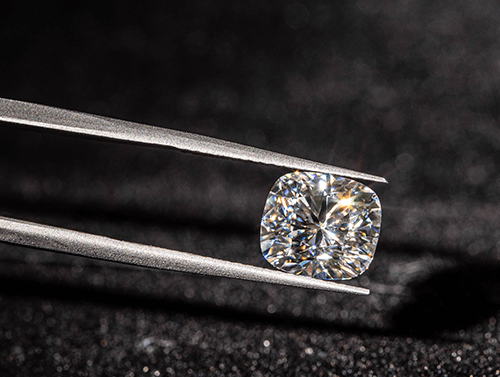
The GIA Diamond Cut Scale for standard round brilliant diamonds in the D-to-Z diamond color range contains 5 grades ranging from Excellent to Poor and is the definitive scale for classifying diamond cuts.
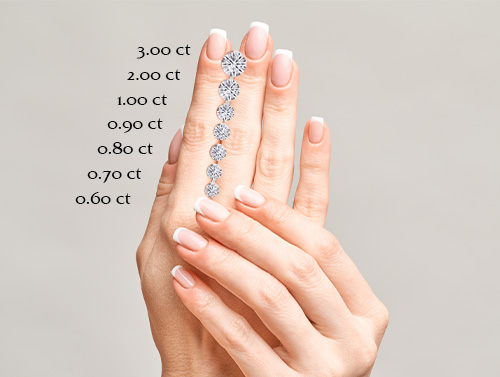
Diamond Carat Weight
To put it simply, diamond carat weight measures how much a diamond weighs. A metric “carat” is defined as 200 milligrams. Each carat is subdivided into 100 ‘points.’ This allows very precise measurements to the hundredth decimal place. A jeweler may describe the weight of a diamond below one carat by its ‘points’ alone. For instance, the jeweler may refer to a diamond that weighs 0.25 carats as a ‘twenty-five pointer.’ Diamond weights greater than one carat are expressed in carats and decimals. A 1.08 carat stone would be described as ‘one point oh eight carats.
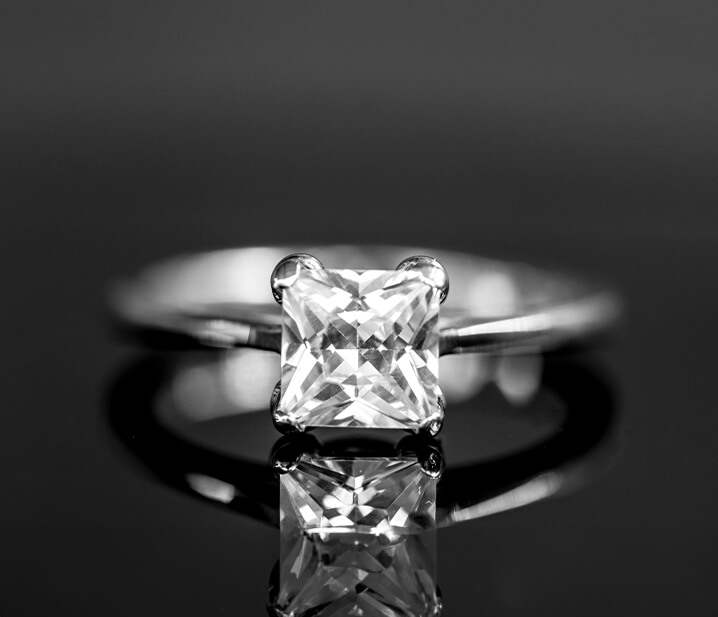
Natural vs. Lab Grown Diamonds
A Natural Diamond is mined from the Earth, while a Lab Grown Diamond is created in a controlled environment that mimics the extreme temperature and pressure of “below ground” conditions that cause the formation of Natural Diamonds.
Lab Grown Diamonds are currently 30% - 50% lower cost than Natural Diamonds, because the Lab Diamond growing process is far less labor and resource intensive than the Natural Diamond mining process. A Natural Diamond is more likely to retain its value, and in some cases, it can appreciate in value over time. Lab Grown Diamonds may not hold as much value over time as advances are made and the cost to produce them goes down.
The same grading criteria are used for Natural and Lab Grown Diamonds. When looking at the two types of diamonds side-by-side, if they are graded as the same quality, there will be no visible difference. It takes a trained eye and testing equipment to identify a Lab Grown Diamond. Our staff will guide you to help you pick the type and quality of diamond that is best for you.
